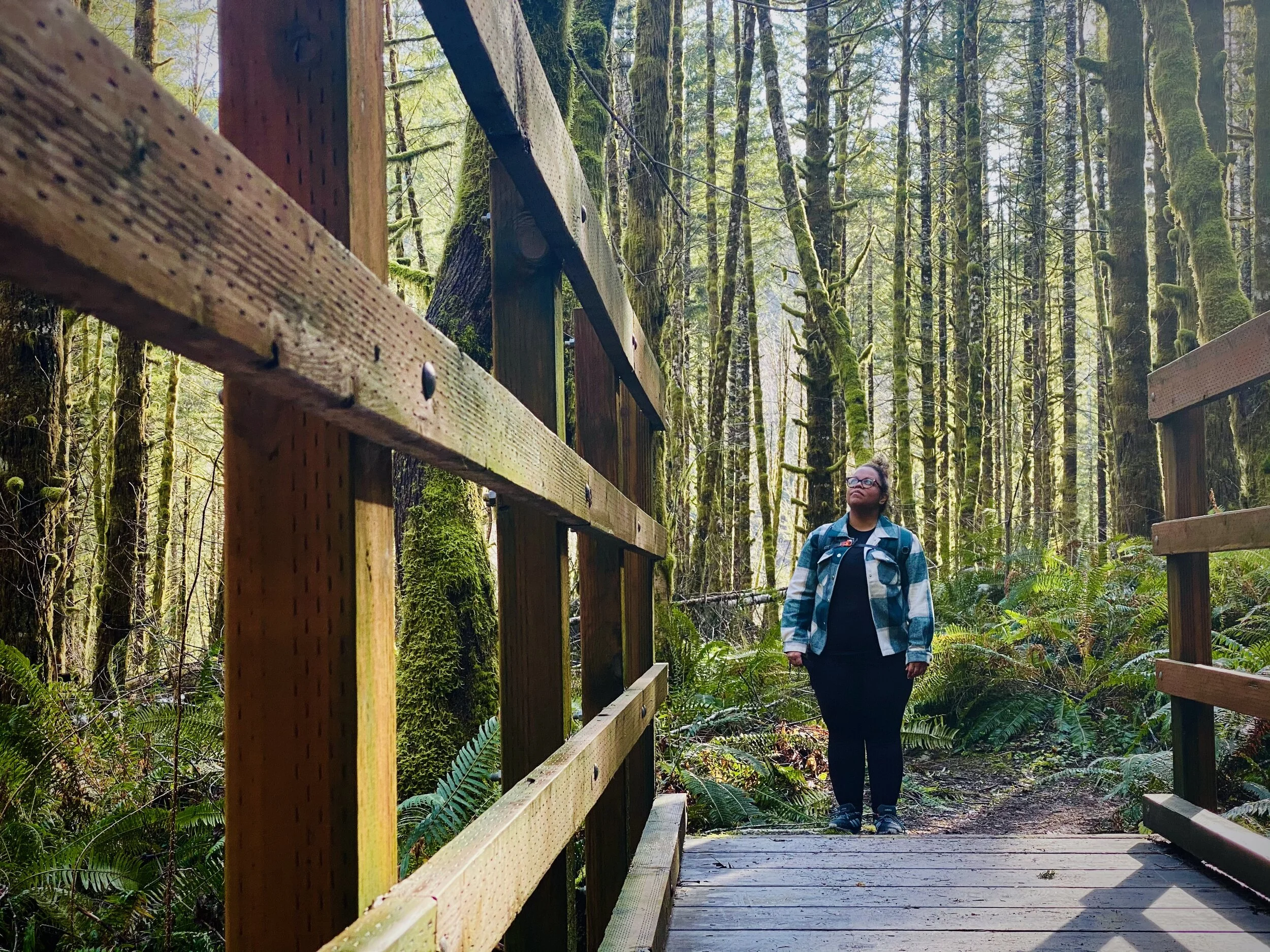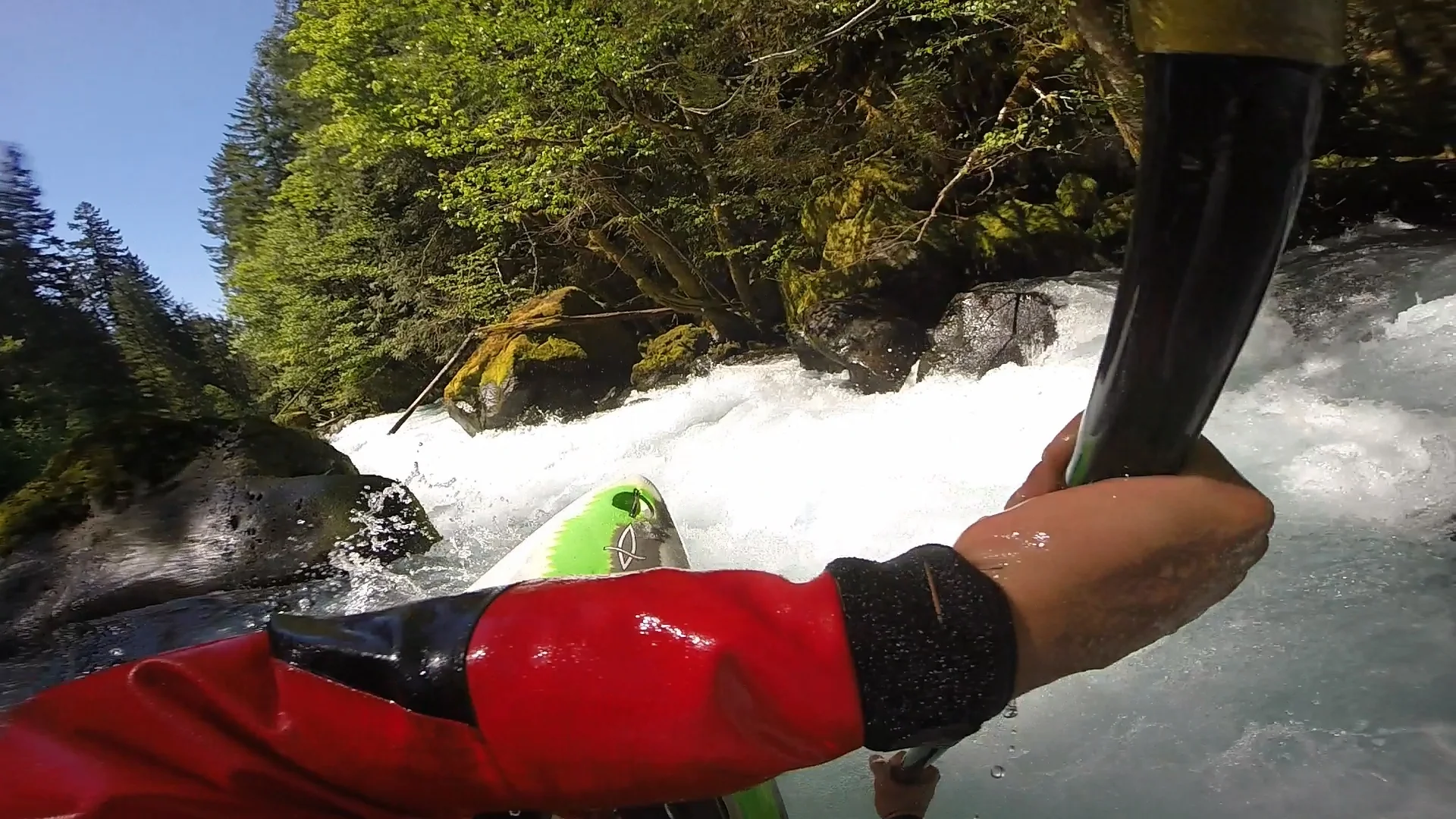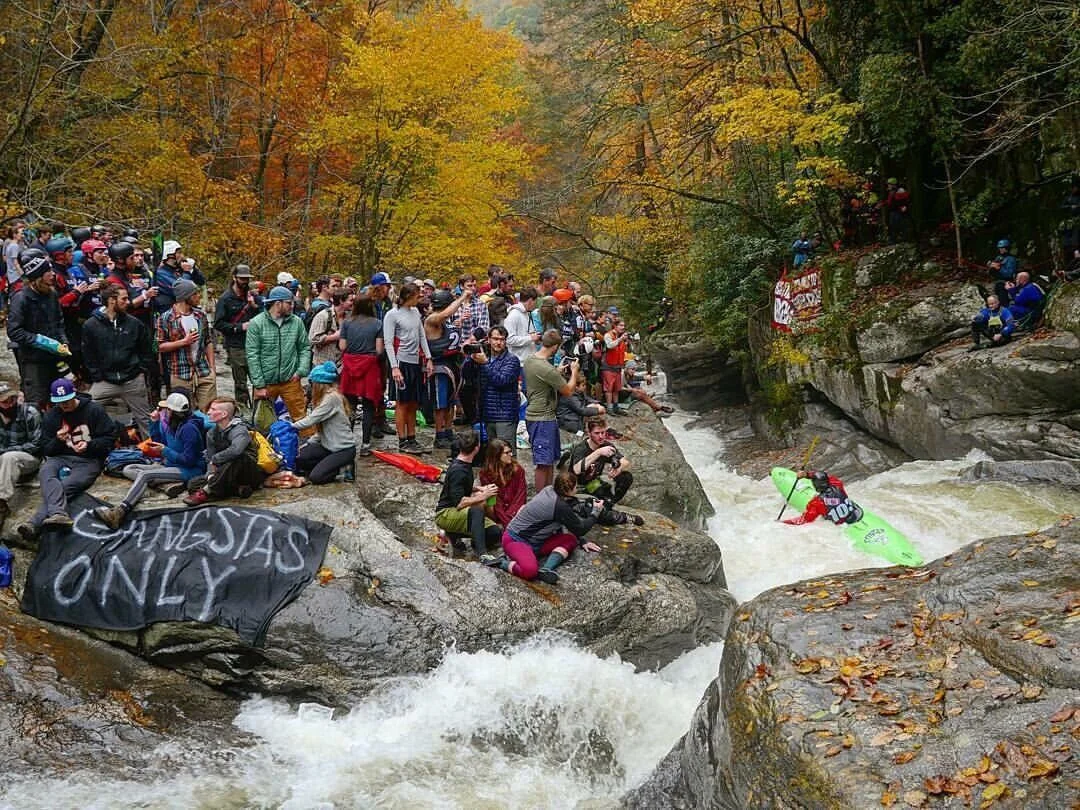Adam lives in Portland, OR and paddles Class IV and V rapids across the country. He grew up in a Caribbean household and got into kayaking and guiding in college. He’s done commercial modeling for Columbia, Mountain Hardwear, Damien, the North Face, Merrell, Nike, Bass Pro Shops and NRS. He’s also been featured on Northwest River Supplies, Mindful and the Greater Good Science Center at UC Berkeley.
Stay tuned for some pretty epic tales of adventure across the Northwest.
MEET ADAM EDWARDS
Where's home for you? Portland, OR. I came up for college and ended up staying. Previously, I lived in Arizona and Michigan, as well as a few other states, before this. Moving to Oregon was a nice return to having seasons.
What’s your profession? I’m a commercial and lifestyle model/actor. I teach kayaking. I work for an aborist as a groundsman. I’m in school finishing up and about to apply to nursing school. A whole lot of hats. This was my first year back in school and I was able to balance it by living in Portland. There are really good rivers to kayak and outdoor activities 30mins to an hour away. I’m also getting better at specific time management. It’s a stereotype of whitewater kayakers that thise want to be able to travel and paddle for the rest of their lives end up becoming travel nurses. Extreme sports athletes as travel nurses; it’s a job I can move around with!
How would you describe your ethnicity? …An American. My family is from the Bahamas and Jamaica. Ethnically I consider myself a Caribbean Islander even though I was born in the States. My behavioral values come from my older brothers who grew up there. We were all raised stateside but my brothers, 7 and 5 years older than me had some time to absorb the home culture. My parents were also born and raised in the Caribbean. That whole experience is part and parcel of how I was raised.
How long have you been kayaking? What got you into the sport? I started in 2010 or so. I was living with my best friend at the time and she convinced me to get a job at Portland State's Outdoor Program. So I went there and start learning. She took us rafting New Year’s Day with snow on the ground. We took a really long swim and I was like, this is amazing. I worked for the outdoor program in college and learned everything I could about all of the outdoor sports which were centered around water. I went to the outdoor guide school and I worked my way up from an inflatable kayak to a hard shell. I still teach for a company called Next Adventure in Portland. I’m an ACA certified instructor and teach beginner, intermediate and advanced whitewater and flatwater kayaking as well as stand up paddle boarding. We take people out on runs they might want to see but otherwise might not be able to do on their own.
What's the difference between a Class IV and a Class V rapid? A class IV rapid has difficult moves that you have to make. Failure to make them can lead to injury, though not always. Odds are it will be unpleasant if the requisite maneuvers are not made. Class V rapids are at the expert end of maneuvers and have guaranteed or extremely high probability of serious injury or death if those maneuvers are not made. The grading system for Whitewater is very subjective as well, since depending on the situation you find yourself in you may be as likely to get injured on class II s a class V. Also some class V's and be easier than some class IV but are class V becuSe of consequence. There is also a + and - rating addition with V+ meaning definite injury or death, in practice.
For kayaking with friends we run Class III to V. Most of our favorite runs are IV-V range. For racing we compete on easy Class IV runs and on some Class V runs. I do a few of those races but those are the upper realm of kayaking. The field is small and the speed gap gets more pronounced as you move up. For example,on the east coast Green River Narrows is a Class V race. There is a lot of whitewater history on the east coast. On the west coast we have the Little White Salmon Race. It’s a pretty intense Class V race. The biggest, the North Fork Race, is a spectacle of kayaking attracting some of the best paddlers in the world.
Overall, the sport is progressing. Traditionally, your average kayaker is more in the Class III-IV range, however, some Class V runs with road access are getting more popular as people and boats get better. If you were to watch kayaking from the 90s and 00s there were definitely some graceful kayakers at that time. Extremely skilled. But they paddled in really crappy boats. Now the kayaks are almost a uniform design even as each company adds tweaks to what works best. Better boats , access to rivers and instruction, and the increase in community size have allowed the skill level to go up up up.
So what's it like being one of only a handful of Black men in the sport? Any advantages or disadvantages? Do you think numbers are likely to increase in the future? I feel like, for me, it’s definitely a regional thing. When I started kayaking I was like I’m the only black guy. It’s such a small community that if you look different you stand out. Everyone tends to remember who I am. I’ve never had any negative associations with it. My understanding of it; the northwest overall isn’t very diverse. I’ve actually been able to connect with paddlers of different ethnicities as I’ve traveled. I’ve gone to Central America, was paddling in Mexico this past winter, and paddled in British Columbia a few years back. That introduced me to a more ethnically diverse crowd. The Northwest is not that diverse so there’s not that exposure (for ethnic minorities) to the sport. However, if you look at a roster of the top 20 paddlers in the world, there’s a pretty large representation of diverse ethnicities. Central and South America have some paddling meccas. Two of the most skilled paddlers in the world are both from Spain. One of the most popular is Mexican—Rafa Ortiz.

























These six Black athletes are pushing boundaries and defying gravity in the air, at their local skate park and in the mountains.